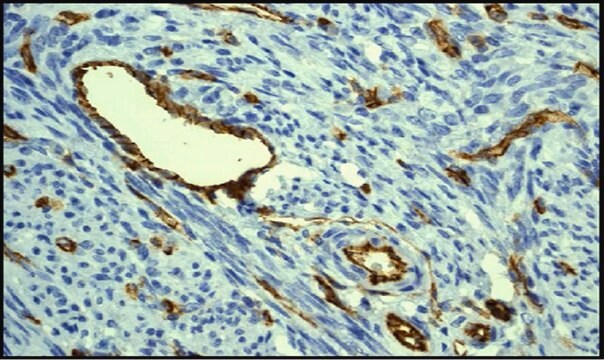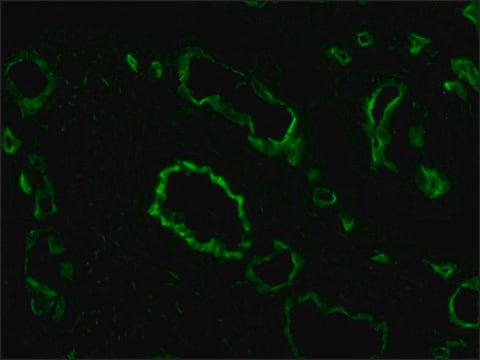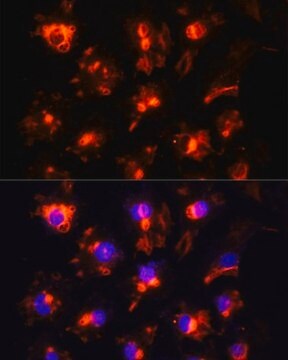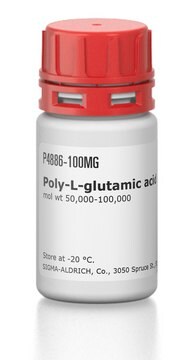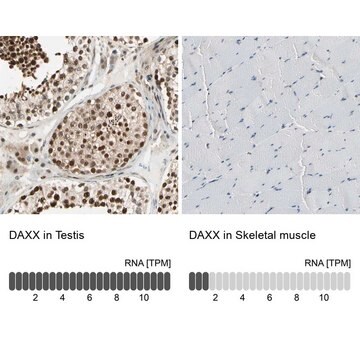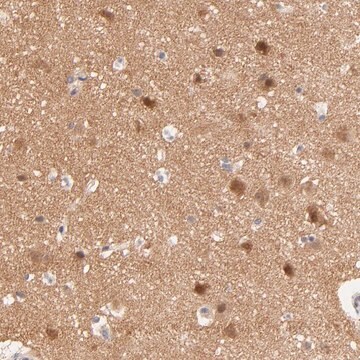MAB1393Z
Anti-PECAM-1 Antibody, clone TLD-3A12, azide free
clone TLD-3A12, Chemicon®, from mouse
Synonim(y):
CD31, MAB1393
About This Item
Polecane produkty
pochodzenie biologiczne
mouse
Poziom jakości
forma przeciwciała
affinity purified immunoglobulin
rodzaj przeciwciała
primary antibodies
klon
TLD-3A12, monoclonal
reaktywność gatunkowa
rat
producent / nazwa handlowa
Chemicon®
metody
ELISA: suitable
flow cytometry: suitable
immunohistochemistry: suitable
western blot: suitable
izotyp
IgG1
przydatność
not suitable for immunohistochemistry (Paraffin)
numer dostępu UniProt
Warunki transportu
dry ice
docelowa modyfikacja potranslacyjna
unmodified
Specyficzność
Immunogen
Zastosowanie
Immunohistology: frozen sections (-20°C methanol fixation), not recommended for traditional formalin fixed tissues.
ELISA
Western Blotting: 1:500. MW = 130-140 kDa
Optimal working dilutions must be determined by end user.
Cell Structure
Adhesion (CAMs)
Postać fizyczna
Przechowywanie i stabilność
Komentarz do analizy
POSITIVE CONTROL: Activated microglial cells.
Inne uwagi
Informacje prawne
Oświadczenie o zrzeczeniu się odpowiedzialności
Nie możesz znaleźć właściwego produktu?
Wypróbuj nasz Narzędzie selektora produktów.
Kod klasy składowania
12 - Non Combustible Liquids
Klasa zagrożenia wodnego (WGK)
WGK 2
Temperatura zapłonu (°F)
Not applicable
Temperatura zapłonu (°C)
Not applicable
Certyfikaty analizy (CoA)
Poszukaj Certyfikaty analizy (CoA), wpisując numer partii/serii produktów. Numery serii i partii można znaleźć na etykiecie produktu po słowach „seria” lub „partia”.
Masz już ten produkt?
Dokumenty związane z niedawno zakupionymi produktami zostały zamieszczone w Bibliotece dokumentów.
Nasz zespół naukowców ma doświadczenie we wszystkich obszarach badań, w tym w naukach przyrodniczych, materiałoznawstwie, syntezie chemicznej, chromatografii, analityce i wielu innych dziedzinach.
Skontaktuj się z zespołem ds. pomocy technicznej